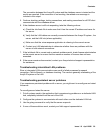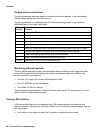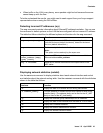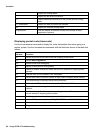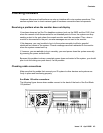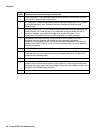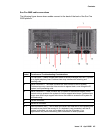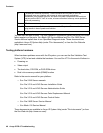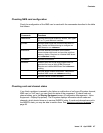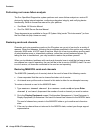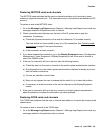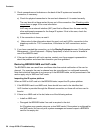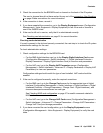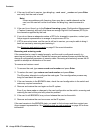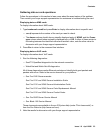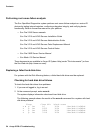
Contents
Issue 1.0 April 2006 47
Checking NMS card configuration
Check the configuration of the NMS card or cards with the commands described in the table
that follows.
Commands Functions
nmsboards
Identifies NMS digital telephony boards, their types
(E1 or T1), and their slot numbers.
pcidev
Identifies board type and communicates with PCI
files. Can be run without having to configure an
NMS board or run ctdaemon.
boardinf
Provides detailed information on the board,
communicates with board, and provides real-time
memory display. Requires an installed NMS board
and ctdaemon running.
trunkmon
Identifies trunk status
shows95
Shows trunks ABCD bits being toggled and is a
good tool for Loop or Wink (E&M) protocols.
Requires an installed NMS board and ctdaemon
running.
showcx95
Provides board timeslot information. Requires an
installed NMS board and ctdaemon running.
ctavers
Identifies version of NMS software
Checking card and channel states
If you think a problem is caused by the failure or malfunction of an Avaya IR system channel,
NMS card, or VoIP card, you can check the state of the component. To check card and
channel states, go to the Display Equipment screen (Configuration Management > Voice
Equipment > Display Equipment). The IR system displays information about cards and
channels, which should show an in service (INSERV) state. If cards and channels are not in
the INSERV state, you may be able to restore them. See Restoring cards and channels
on
page 48.



